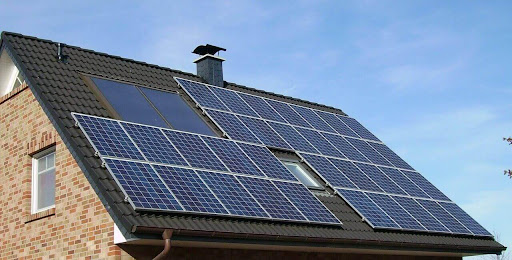
Many people are researching the best ways to power their houses with clean, renewable energy as solar panels gain popularity.
You may create a supply of renewable energy that can be used anytime your home requires it by storing your solar energy inside a solar battery.
The advantages of home battery storage systems are self-evident, but deciding which best solar battery to use is vital. You might ask, "What size solar battery do I need?"
This article will assist you in better learning your home solar system options in the UK so you can choose the best-size battery for your unique needs and financial constraints.
Before making a choice, it's a good idea to consult with many expert installers, but we've covered the essentials below.
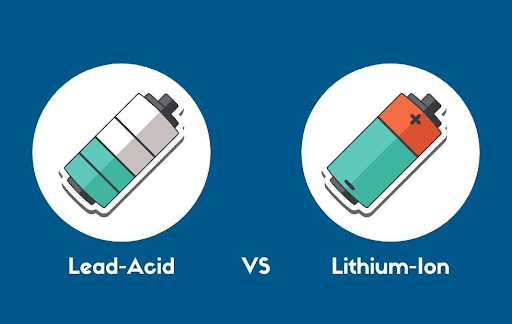
There are two types of lead acid batteries: flooded and sealed.
A flooded lead acid battery typically lasts 5-7 years instead of 3-5 years for a sealed lead acid battery, but it also needs more maintenance.
The flooded lead acid battery is the greatest option if you seek the least expensive solar battery storage system.
The most expensive solar battery is lithium-ion, but it is also the smallest and most long-lasting (approximately half the size of a lead-acid battery).
Lithium-ion batteries offer substantially more energy storage capacity, faster charging, and superior efficiency.
Like the battery technology in your electric vehicles, tablets and phones, many solar batteries are Lithium-ion based.
You'll unquestionably receive your money from one of these lithium-ion batteries.
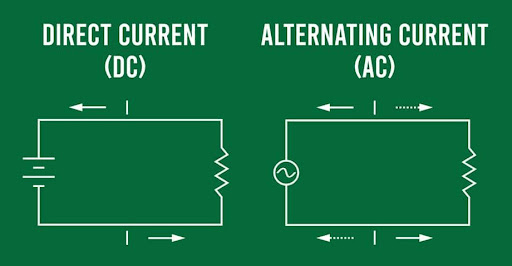
Different home battery storage systems may come either 'AC-coupled' or 'DC-coupled'.
A DC-coupled battery system locates the battery between your solar panels and the solar inverter. DC-coupled systems are more thermodynamically efficient.
An AC-coupled battery system has a separate inverter in the battery itself.
As it connects through the energy metre, it is considerably simpler to retrofit to an existing system, but it also calls for an additional inverter.
Find out if you can connect a solar panel directly to a battery. Some installations may require a separate inverter; others can use the same inverter as your solar panels.
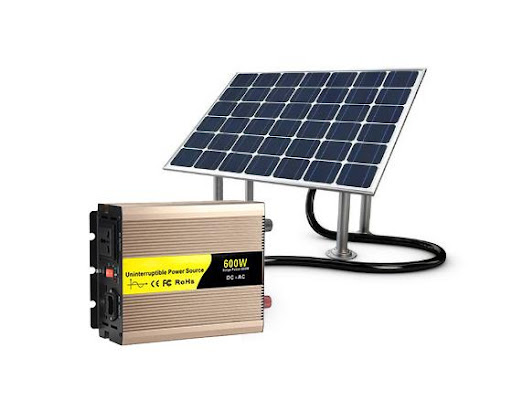
Here are some things to think about while sizing a solar battery:
Knowing how many hours of direct sunlight the solar panels will be exposed to is vital because power generation relies on incident sunlight on the solar PV systems rather than heat.
The location and season of an off-grid site affect how much energy may be obtained from solar power.
When a solar PV system is pointed directly at incident sunlight, with the sun's rays shining directly down onto its surface, it generates as much power as possible.
You must be aware of the peak sun-hour number for your position to calculate solar insolation, which is a measurement of the intensity of the sunlight impacting the Earth at your location.
It's crucial to have a suitable solar site so that your existing solar PV system can receive bright sunlight every day of the year.
Making a list of all the appliances that will be used in their specific home and estimating how long each one will be switched on each day using energy is what most people do first.
You may get the daily energy usage in watt-hours by multiplying each device's power consumption (in watts) by the hours it is on.
The sun insolation at a specific location is something we already know with certainty. We completed the electrical load list survey to know how much electricity we use daily.
The only thing left to do is to specify the kind and quantity of solar PV panels that will generate the necessary 1.8 kilowatts of power.
Hundreds of solar panel options have varying voltage ratings, sizes, and shapes.
The solar panel size often refers to the panel's rated power output wattage or potential for producing power.
The size and construction of solar panels can also affect their voltage ratings. Those that produce output between 12 and 48 volts are typically used for off-grid applications.
Maximum Power Voltage (Vmp) times Maximum Power Current (Imp) represents the maximum power (Pmax) that a single solar panel can produce under full sun.
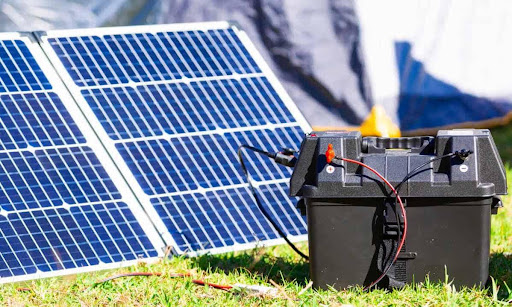
Once your battery bank and solar panel array have been sized, choosing a charge controller is simple.
All we need to do is use the formula power = voltage x current to determine the current flowing through the controller.
Divide the power solar panels generate by the battery voltage.
For instance: An illustration would be a solar array producing 1 kilowatt and charging a 24V battery bank. Therefore, the controller's size is 1000/24, or 41.67 amps.
To accommodate for fluctuating power outputs, multiply the figure you've discovered by 1.25 to create a safety factor: 41.67 x 1.25 = 52.09 amps
To completely understand what you are purchasing, we advise acquiring the following information before deciding:
There are two types of solar batteries: flooded and sealed. Lead-acid batteries used in automobiles and off-grid solar panel installations are often flooded batteries.
They are less expensive and last longer because they are simpler to maintain and clean. These batteries produce a tiny amount of hydrogen gas when used.
Valve-regulated lead acid, or VRLA, batteries are another name for sealed batteries. Because they are sealed, they cannot be repaired or maintained.
The fluids and plates inside the battery are kept clean by a charge controller to increase battery life. When these batteries are in use, they don't release hydrogen gas.
The maximum amount of energy, measured in kilowatt-hours that a battery can hold at any one time is its battery size, sometimes referred to as capacity.
Scalable solar batteries include the Growatt 3.3kWh. Adding an extra solar battery storage system can gradually improve your battery's capacity.
There is a lot of battery size; generally speaking, the bigger the capacity of the battery, the more expensive the batteries are.
The average household in the UK uses 8 to 10 kWh of electricity daily.
One storage should suffice if you want to cut your energy bills, though this will depend on your household's energy consumption.
It will also reduce your environmental impact, lowering your carbon footprint.
The "usable capacity" describes the excess electricity a system can store because a solar battery system should never be completely depleted.
A battery's charge rate is the amount of time it takes in Amp-hours to charge or discharge it.
One can determine the charge/discharge rate by dividing the battery's total capacity by the number of hours needed to charge or discharge; one can determine the charge/discharge rate.
Most typical households in the UK and the EU will utilise low-voltage batteries with a 3kW discharge/charge rate.
High voltage solar batteries' charge/discharge rate, uncommon for household use, is 5 kW. Your storage can handle bigger base loads and surges with a higher charge/discharge rate.
It would be advised to have a charge controller that allows for significant depths of discharge and several units with a significant useable capacity for very intensive electrical demand.
Owners should be aware that not all solar batteries qualify as "Uninterrupted Power Supplies," which would enable a smooth shift from the National Grid to the energy stored.
It is crucial to ensure that the solar battery storage has this capability, not just an "Emergency Power Supply" capacity, if an Employer wants to have this function.
Here are some ideas that will help you comprehend what you want and need to help you narrow down your energy storage options that will work best with your solar panel system.
Leading national and global organisations involved in producing solar power generating systems develop certification standards
It dictates the safety and, often, durability requirements of solar battery storage used in solar panels.
While some standards are mandatory, others are simply for elevating the product standard and including industry best practises and benchmarks.
All batteries lose depth of discharge with time. Consequently, a normal solar battery warranty is good for ten years.
Even if the storage will continue to function after that, the warranty is designed to ensure a minimum depth of discharge for at least that duration.
The Powerplus Energy storage is guaranteed to give an 80% depth of discharge after 10 years, which is exceptionally high after such a long time and makes it perfect for off-grid solar arrays.
Cheap battery storage will be a game changer for rising electricity prices.
It depends, as usual, on the chemistry of the battery.
While lithium-ion battery technologies require little to no maintenance, other types of batteries may require an annual checkup by a professional specialist.
For example, with flow batteries, you'll need to ensure adequate electrolyte level, topping off the tank if any has been lost.
You may also need to clean a membrane or air filter to maintain top performance.
Using a solar battery is one approach to maximising your solar power system.
It saves solar-generated electricity, which means you can store excess energy to power your home when the solar panels don't have enough electricity produced.
It is especially important during the night or a power cut.
Some house battery systems can power your home in the event of a power cut, but not all products of this type are designed with this capability.
Check the specific gravity and voltage of the battery to determine the charge status or discharge depth.
Failure to monitor these two elements may result in considerable battery sulfation.
If this occurs, you can overcharge the battery to reduce the damage. However, the harm may not be reversed.
This is only done for unsealed batteries (FLA), also known as flooded lead acid batteries. Take a look inside your battery cover.
The cells should be filled with distilled water so no metal lead surfaces are visible. Most batteries will include a "fill line" that indicates the electrolyte level.
The maximum fluid level is roughly 1/2" below the cap; do not overfill your batteries, or they may leak!
To extend the life of your wet cell battery, keep an eye on the electrolyte levels and replenish them as needed. Unfortunately, this is not as simple as it may appear.
Fortunately, following these six steps will make it easier. Examine the vent with a tiny flashlight. The cell plates will be visible in the electrolyte.
The electrolyte concentration should be high enough to immerse the cell plates. Certain battery manufacturers say the water level should be 1/4 inch below the fill well.
Here are some of the most often-asked questions in the UK about what size solar battery you need:
An 8 kWh solar battery is required for the typical three-bedroom home. You'll probably need a 2-4 kWh battery if you live in a home with one or two bedrooms.
A big solar battery may also result in chronic undercharging, poor performance, and a shorter lifespan.
You can also get a large battery just in case, but this won't make sense financially if you get battery storage to save on energy bills.
Depth of Discharge (DoD) measures how much of a battery's useable capacity should ideally be used.
A Tesla Powerwall investment will save you money in the long run.
Even while the initial cost of purchasing a Tesla Powerwall may be high, you will not be charged for its power.
So, what size solar battery do I need? With all the energy firms raising their energy prices, installing the best solar battery and panel will help with price increases.
As we move into a new, environmentally friendly era, you can benefit greatly. Thanks to this article, you should better understand solar batteries and the various battery sizes and types.
A new solar panel battery price will set you back around £3,000, but it's worth noting that this is an initial cost.Don't worry if you're still uncertain about what size solar battery suits your house. We advise looking for calculators for the best solar battery size.